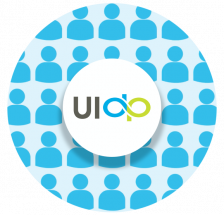To build industry engagement, faculty relations should be front and center
Excerpted from the July 2022 issue of University-Industry Engagement Advisor. UIDP members can view the entire issue here.
There’s little doubt that faculty members are among of the most critical elements of creating successful U-I partnerships. So, how do corporate relations managers develop strong relationships with these key internal stakeholders, and how do they continue to strengthen them over the years? Leaders agree that effective communications — highlighted by continuous outreach and understanding of faculty challenges — are critical.
They also agree that without strong faculty relationships, it is virtually impossible for them to succeed at their jobs. “I think faculty is the most important factor,” says JoonHyung Cho, director of corporate relations and business development at the University of Virginia. “People assume that what I and my colleagues do is external, and while that’s true, we can’t do it without internal relationships — and the faculty is the center of that.” In some ways, he notes, “we value those relationships even more than the ones we have with companies.”
“It’s the key to everything that we do,” adds John C. Roberts, PhD, interim executive director for MIT Corporate Relations. “We’re completely reliant on faculty to want to engage with us; they have other options. We need to give them good reasons, good experience — the whole gamut. One way that things come to us is that faculty approaches us directly. If we do not do a great job, we won’t be positioned to help [industry].”
Keys to strong relationships
And what are some of the keys to developing those strong relationships? “They’re the same as with any relationship building,” asserts Joseph B. Havrilla, associate vice chancellor for innovation and entrepreneurship at the University of Pittsburgh. “One is outreach — making a personal, face-to-face connection. That’s why it’s so important to get in front of them; that’s the number one. Number two, share information with faculty that’s of interest to them. Three, tell them very clearly how you can and will help them do their jobs. Then, be ready to follow up — don’t make promises you will not keep.” In other words, he explains, “tell them, ‘this is where we can help you, how we can help you navigate the process, and these are the benefits to you.’”
It’s absolutely critical, he adds, to manage expectations. “The last thing you want to do is lead a faculty member to a relationship where they have to do things that they were not aware of and that do not fit with how they want to work,” he cautions.
Outreach is also critical to Roberts’ game plan with faculty. In fact, he shares, “we’ve just finished a series of meetings with the heads of schools, which we had not done for years (thanks to COVID). That had weakened systematic outreach to faculty at certain stages and levels.” He began by meeting with the heads of schools, then gave assignments to the team to contact different labs and centers. Their charge is “to reach out on a quarterly basis [to discuss] what we’ve done together, and what we could be doing.” With a team of 30, his department also has assignments to individual departments and program directors.
For Jim O’Connell, assistant vice president for commercialization and director of UF Innovate at the University of Florida, another key to good relationships with faculty is hiring staff with the right skill sets. “That starts on my end with hiring people with soft skills,” he says. “You need some technical knowledge, the depth to hold your own with faculty, as well as business acumen, and the soft skills to interface effectively with faculty. If you’re a hard-nosed businessperson, you will not have the patience or the ability to stroke an ego; you will not be effective in the long term. I try my best to hire only people with industry experience…. You have a much better chance of getting someone who meets all the ‘pieces.’”
“We need to be a resource for [faculty],” adds Cho. “You hear about us being the front door for industry; sometimes we’re the front door for faculty when it comes to the university — knowing other people in compliance, in development. Many key faculty members I’ve spoken with say they like having one person they can ask those things. We also need to provide some more personalized services and listen to what their needs are.
“What faculty tell us — particularly those who engage with us a lot — is that we provide a window on global problems, new problems they may not have known existed or were important,” he continues. “Also, we provide ‘pressure-testing’ as to whether industry is ready for their ideas.”


